Listening Slowly緩慢地聆聽 | 2023
Sound Installation
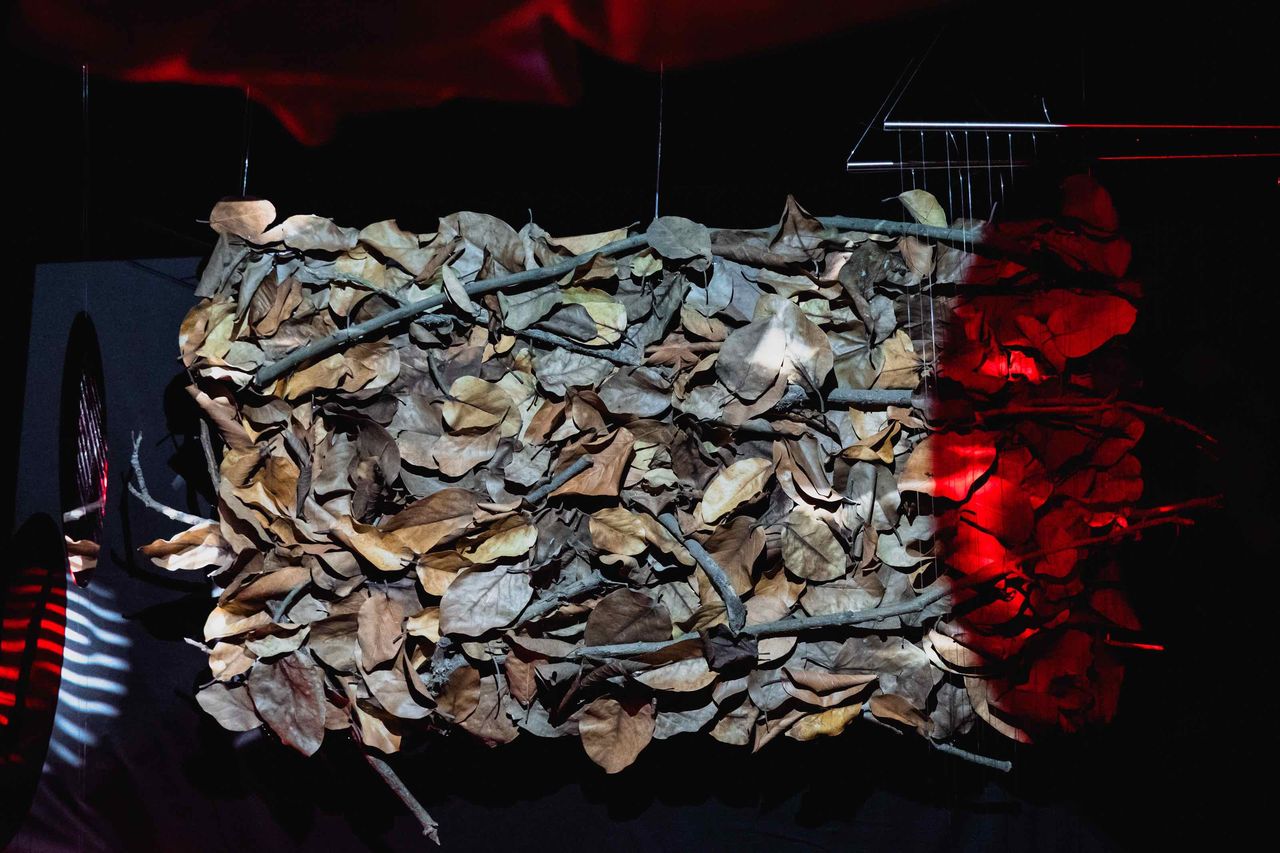
The sounds of nature are much livelier than we might imagine. Many sounds are imperceptible to the human ear and require instruments to expand our perception. By being able to perceive these sounds, we have the opportunity to understand the plight of other organisms. Bat echolocation calls are in frequencies higher than what the human ear can detect, so they need to be downshifted through instruments for us to hear them. The process of downshifting and translating these sounds for bat perception is relatively slow for us, but despite this, we must begin to listen. The artwork translates bat traces into the realm perceivable by humans, not only showcasing the sounds but also describing them and how they are heard. To pursue bats, humans use various instruments to explore and collect sounds. Through sound and installations in the exhibition space, stories about bats and humans are portrayed scene by scene.
Scientists use a plethora of instruments to observe bats, expanding our perceptual abilities through machinery. Ultrasonic sensors allow us to visualize bat vocalizations, which is crucial for researchers to identify bat species and their activities. Tools like nets that capture bats without harming them and burlap bags for temporary resting are also employed. Elements of these instruments are integrated into the artwork installations.
Another aspect of this piece is to allow the audience to imagine themselves as a bat. “What is it like to be a bat?” is an article written by American philosopher Thomas Nagel in 1974 about consciousness. Our senses differ significantly from those of bats, but through the setup of this exhibition and the transformation of instruments into states perceptible by humans, one can imagine being a bat to understand their situation, rather than viewing other life forms from a human-centric perspective.
By trying to imagine oneself as a bat, one can reassess the trees and buildings in the installation. Perhaps they are not meant to be seen but heard. Upon entering the exhibition, visitors can hear the downshifted calls of bats. When observing bats, one doesn’t just hear bats; there are also many other environmental sounds, such as dripping water in dark caves, different bat species, flowing water, forests, frog calls, and researchers’ conversations, including setting up bat nets and footsteps passing by. The artwork culminates in sound art installations.
自然界的聲音遠比我們想像中熱鬧許多,許多聲音是人耳無法感知的,需要透過儀器擴展感知。因為能夠感知這些聲音,我們有機會理解其他生物的處境。蝙蝠的超聲波高於人耳可聽到的頻段,因此蝙蝠的高頻聲波需要透過儀器進行降頻,將聲音振動的頻率降低,人類才可以聽到蝙蝠的聲音。聲音降頻以及轉譯的過程,我們之於蝙蝠的聽覺感知是相當緩慢的,即便我們如此緩慢,我們仍需要開始聆聽。作品展現將蝙蝠的蹤跡轉譯成人類感知的範圍,不只展現聲音,也描述聲音、如何聆聽到聲音,為了追尋蝙蝠,人類有著各種儀器的探勘、採集聲音的過程,從聲音與裝置於展場空間中建立一幕又ㄧ幕關於蝙蝠與人類的故事場景。
科學家使用大量的儀器去觀測蝙蝠,我們的感知的能力透過機器被拓展開了,因為超聲波感測器,能看見蝙蝠的聲音圖形(對研究人員來說看蝙蝠的聲音圖形是非常重要的,能夠判斷蝙蝠的種類,以及正在進行什麼樣的活動),也可以聽見降頻的蝙蝠聲音。有琴網能抓住蝙蝠,但又不傷害他們,以及讓蝙蝠暫時休息的麻布袋等工具。這些儀器的元素融合於作品裝置中。
這個作品另一個向度是讓觀眾想像成為一隻蝙蝠的視角。《成為一隻蝙蝠是什麼感覺?》是美國哲學家托馬斯·納格爾(Thomas Nagel)於1974年寫的一篇關於意識之文章。我們的感官跟蝙蝠的感官有很大的不同,但是透過這個展場的設置與儀器轉化成人們能夠感官能體驗得到的狀態,透過想像成為一隻蝙蝠的蝙蝠,去理解蝙蝠的處境,而不再以人類中心視角看待其他的生命。
嘗試將自身想像如果作為蝙蝠,重新看待裝置中的樹木、建築,或許根本不是用看的,是用聽的。觀眾進到展場中,可以聽到蝙蝠降頻的叫聲,在觀測蝙蝠時,不只有蝙蝠而已,還有很多其他環境的聲音,例如:在黑暗的山洞水滴聲、其他不同的蝙蝠、水流、樹林、蛙鳴等、研究人員探勘的對話,包含架設蝙蝠網、走經過的腳步聲等等。作品以聲音藝術裝置作為最終呈現。
《緩慢地聆聽-張晏慈個展》
Listening Slowly - Yen Tzu Chang | Solo Exhibition
🦇Time:2023.10.07-2023.12.24
🦇Site:黃金蝙蝠生態館 Formosan Golden Bat’s Home
【指導單位】文化部、雲林縣政府
【主辦單位】台灣永續聯盟
【協力館舍】黃金蝙蝠生態館
[Supervising Agencies] Ministry of Culture, Yunlin County Government
[Organizer] Taiwan Sustainable Alliance
[Collaborating Venue] Formosan Golden Bat’s Home

Photo by @iichihii @elysefang

Photo by @iichihii @elysefang
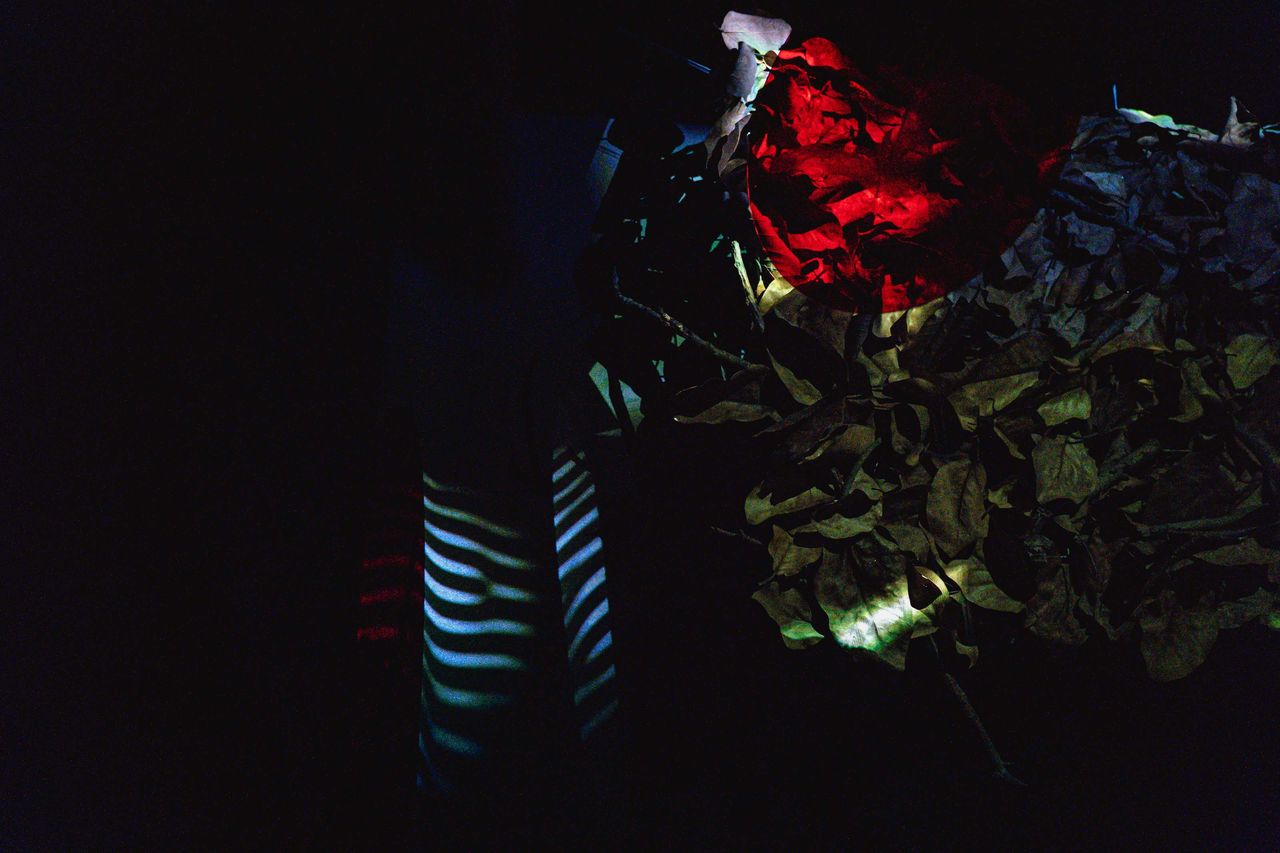
Photo by @iichihii @elysefang
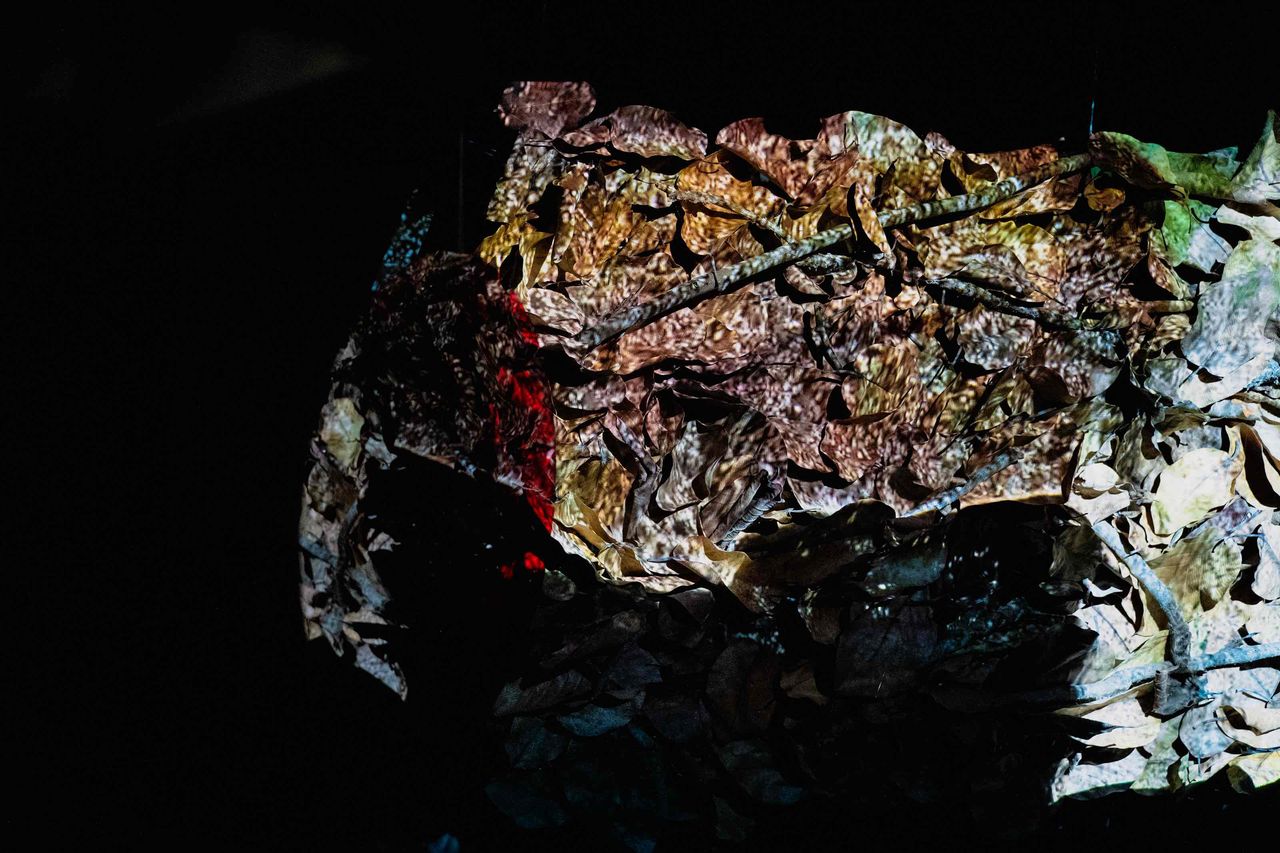
Photo by @iichihii @elysefang
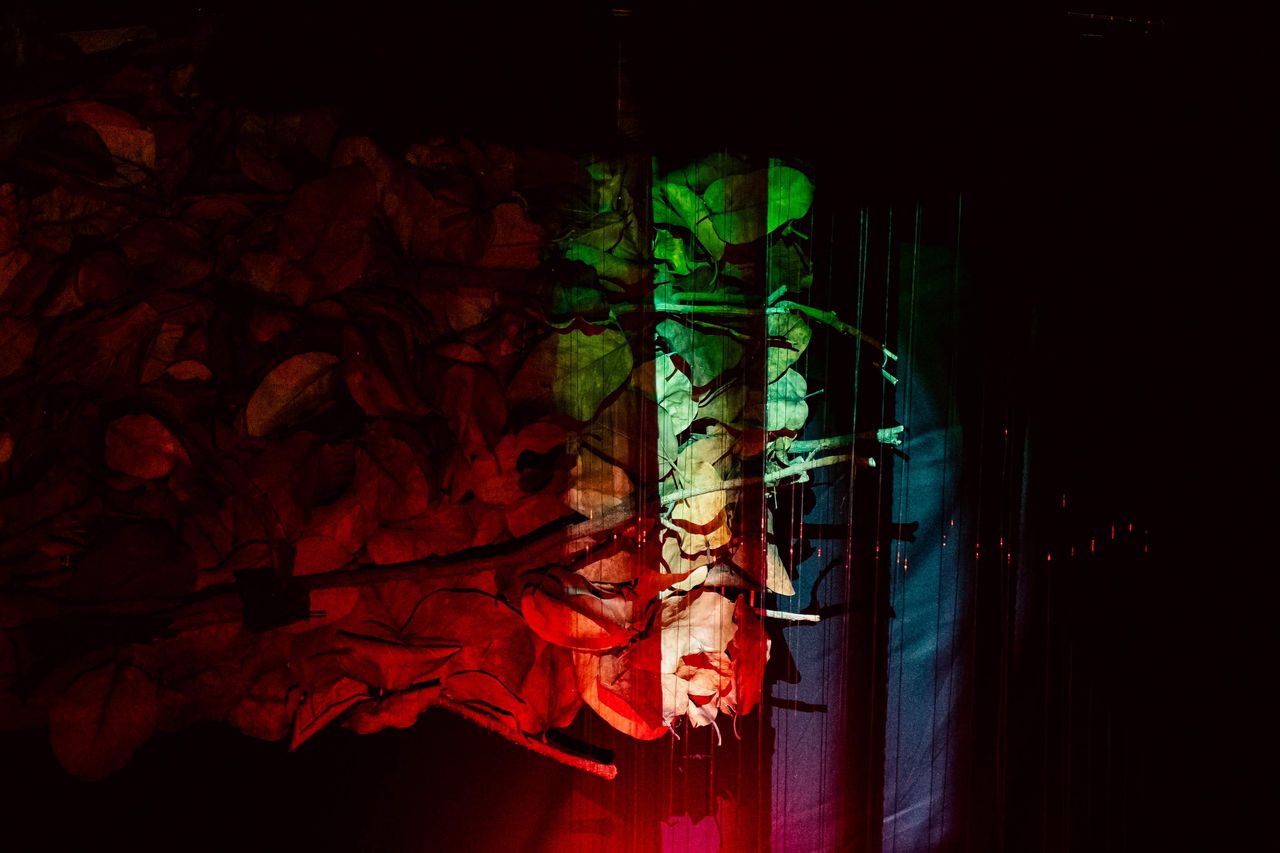
Photo by @iichihii @elysefang
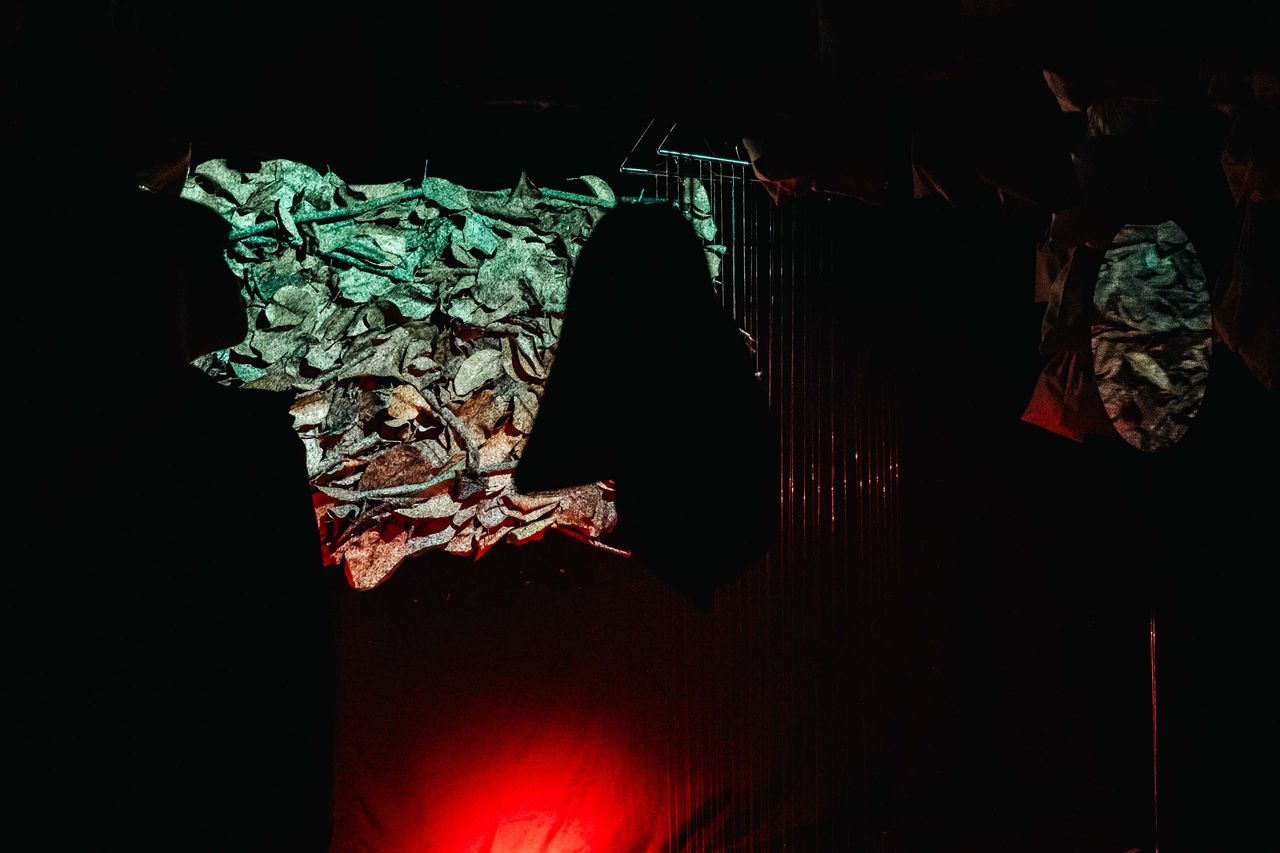
Photo by @iichihii @elysefang
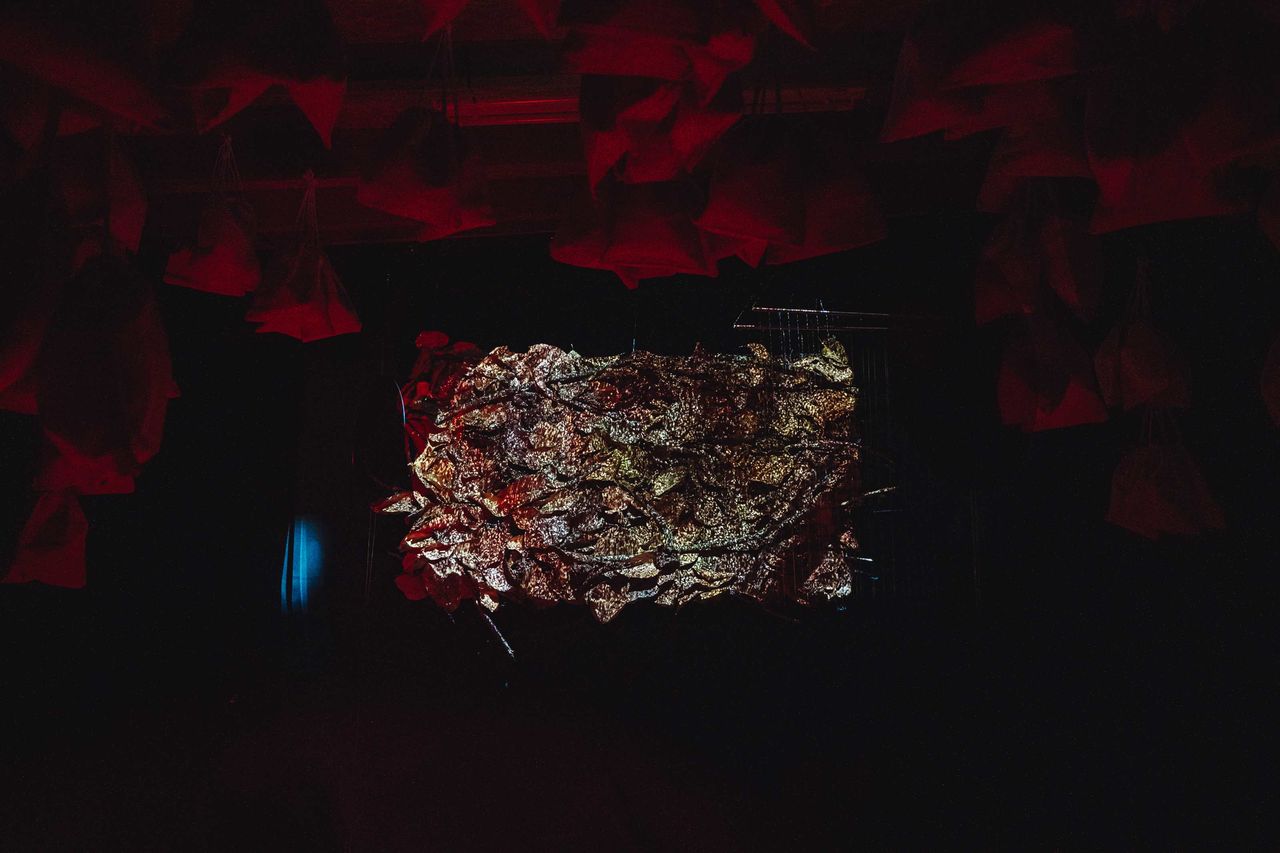
Photo by @iichihii @elysefang

Photo by @iichihii @elysefang
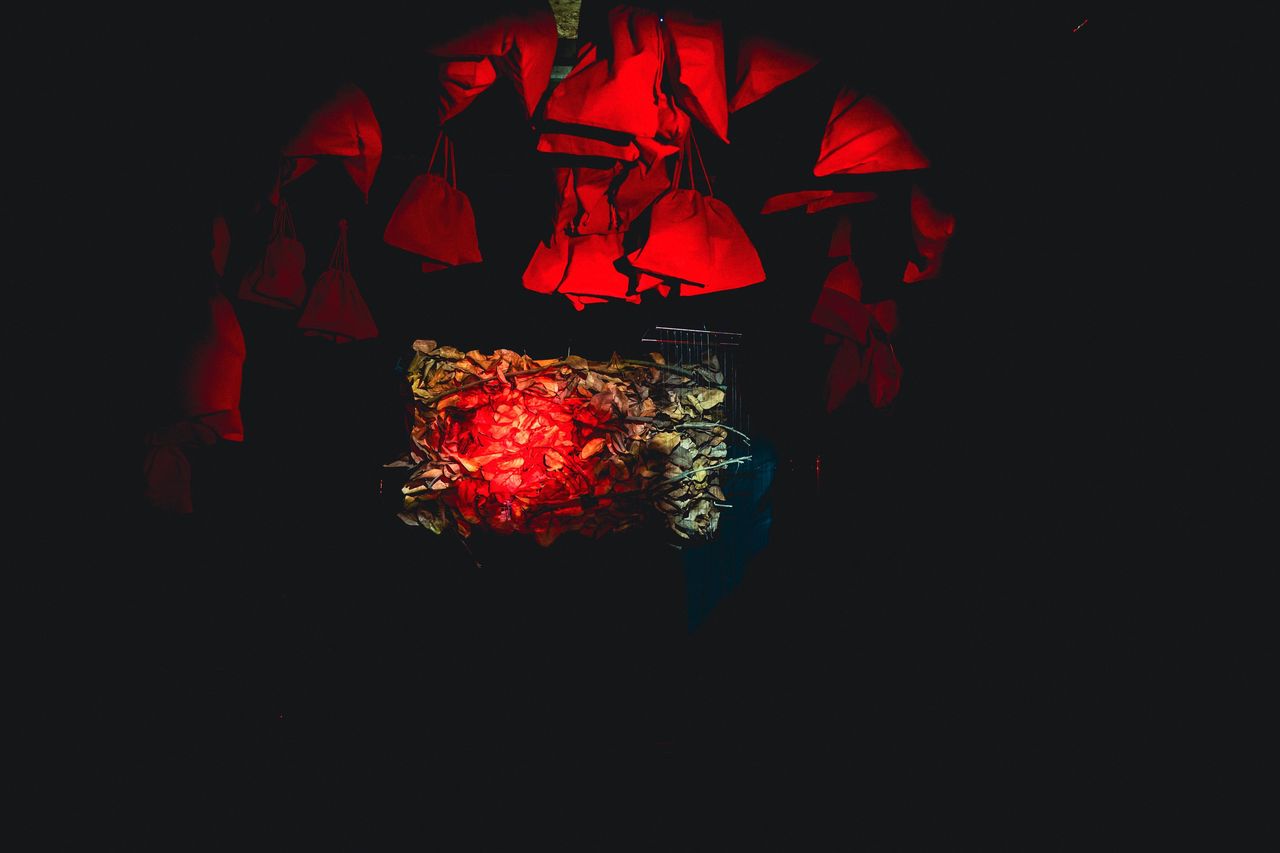
Photo by @iichihii @elysefang